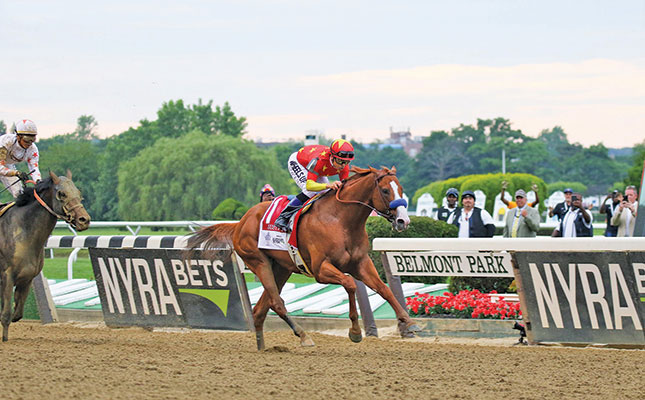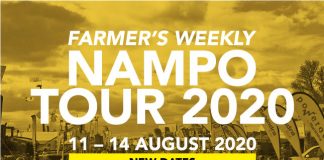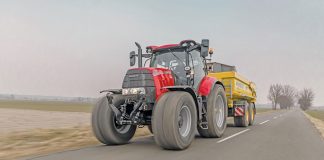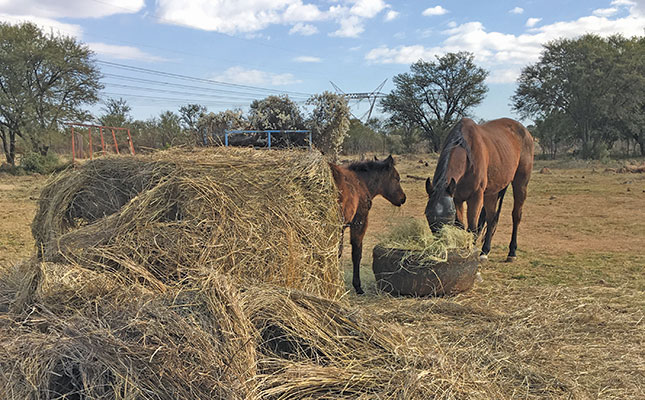
Photo: Wikimedia Commons
Horse racing is a multibillion-dollar industry in the US alone, and is popular throughout the world. Many countries have established themselves as exceptional racehorse producers, including Ireland, where the renowned Coolmore Stud is situated, the US and Australia.
As with all animal breeding, the success of an efficient racehorse with exceptional acceleration, stamina, speed and movement comes down to the horse’s genetics and environment.
Even if a horse has a renowned racing pedigree, if it remains largely untrained and underweight, it is unlikely to become a world-class racehorse. Similarly, a horse with the best training and nutrition in the world may struggle to compete against a horse with adequate training and nutrition that also has the ‘right’ genetics for racing.
Conformation
Horse racing is not just a game of speed. Races are set over several different lengths, and a horse that has good acceleration and speed yet little stamina is unlikely to garner much attention.
Ultimately, the real test of a racehorse is its performance over both short and long distances. This requires acceleration, speed, stamina, agility and good temperament.
Four of these five criteria come down to a horse’s conformation, which refers to its musculoskeletal structure. Thus, in theory, a horse’s conformation will impact its ability to race.
A horse with the correct legs, for example, is hypothetically more likely to win a race than a horse with offset legs. However, as some of the world’s most famous racehorses have shown, this is only true in theory, and correctness doesn’t necessarily mean that you are buying or breeding a winning horse. After all, the great racehorse Seabiscuit was small and over at the knee, so from a conformation perspective, he appeared unlikely to be a champion.
George Adams, bloodstock principal at Housatonic Bloodstock and director of stallions and breeding at Wasabi Ventures Stables in Florida, US, hosted a webinar in 2019 in which he spoke about the aspects of conformation that breeders and agents consider before buying a Thoroughbred on auction.
Conformation
Balance, Adams says, is one of the most important considerations, as this indicates a horse’s potential in terms of racing.
From a breeding perspective, a balanced horse is expected to produce balanced offspring, while an unbalanced horse may pass its conformation flaws onto his/her offspring.
According to Adams, a balanced horse has the following basic characteristics:
- The slope of the horse’s shoulders is similar to that of its hindquarters and back.
- The horse’s shoulders and hindquarters are equally well muscled and sloped.
- The length of the horse’s back matches the length of its legs. The Triple Crown website adds that the distance from the withers to the top of the croup or hips should match the length of the horse’s neck from the poll to the withers. “The length of the back is directly related to the slope of the shoulder. The steeper the shoulder, the longer the back. A horse with a long back is usually not as well balanced as a short-backed horse.”
- The horse’s neck should be well tied into its withers, and should be proportionate to the length of its back. This allows for greater balance and reduces fatigue while racing.
- The horse’s legs should be straight.
Adams uses Triple Crown winners Justify and American Pharoah as examples of Thoroughbreds with near perfect conformation. Secretariat was also considered ‘near perfect’ in terms of conformation.
While Adams describes American Pharoah as having a neck that may be “a little too short”,
the correctness of his legs and balance through his shoulders, back and hindquarters indicated that he could be a winning horse.
“American Pharoah has a very long stride, which means that he can cover ground very quickly. But more than this, he has a very efficient stride, due to his conformation.”
If your aim is to breed champion racehorses, you need to pay careful attention to conformation, says Adams. A horse’s chest, legs, feet, hindquarters, neck and back are all essential to its movement, as well as the speed it can generate and/or maintain.
Chest, feet and pasterns
According to Triple Crown, a horse’s chest should be broad and powerful. “Narrow-chested or slab-sided horses are said to lack power,” the website states. However, the efficiency of a horse’s stride and the swing of its shoulders could be reduced if it is pigeon-chested or has a chest that is too ‘bulky’.
A horse’s feet should be able to withstand around 100 times the force of gravity at full speed, says Triple Crown. This means that a horse with poorly formed hooves may struggle to reach or maintain maximum speed. Its feet need to be able to withstand and dissipate the shock of impact. “The underside of the hoof should have a round, slightly oval shape, with some depth,” the website says.
Adams states that club-footed horses should also potentially be avoided in breeding programmes, explaining that a club foot will affect the gait of the horse, as well as its soundness. A club foot is the result of a tendon flaw that causes the hoof to be very upright.
When it comes to a horse’s pasterns, these should be at a 45° angle. When running, a horse’s pasterns act like springs, and they absorb a lot of weight and force.
According to Adams, an upright pastern, for example, will cause too much torque on the joints, and may lead to injury. Pasterns that are too angular will have a similar effect on the horse.
Cannon bones and knees
In terms of cannon bones, the Triple Crown website says that these should be short, strong, and weighty. “The cannon bone bears the most weight of any bone in a horse’s body. The bone should exit the lower knee or hock cleanly and must be well-centred,” it says.
A horse’s forearm and cannon bone are connected via the knee joint. Adams explains that for a horse’s legs to be considered correct, the forearms and cannon bones must be perfectly aligned at the knees.
In the case of offset knees, the forearms and cannon bones do not align perfectly. Adams says this is an important conformation flaw: “When a horse gallops, it puts all of its body weight on one leg at a time. A horse with badly offset knees will stress the knee joint when running, which can cause serious injuries.”
Horses with offset knees are therefore expected to achieve a much lower price at auction, even if bought strictly for breeding. Adams adds, however, that a mare with slightly offset knees can still be used for breeding purposes, as long as she is covered by a correct stallion. “Most stallions are correct. If they weren’t, they would have been gelded. But even when bred to a stallion, a mare with offset legs may still produce foals with offset legs.”
Some horses, like Seabiscuit, may be buck-kneed. This is referred to as being ‘over at the knee’, and means there is a slight forward deviation in which the knee is set too far forward in relation to the forearm. As a result, the pressure on the joint will be spread unevenly, which could lead to injury, particularly for a racehorse that is expected to gallop at full speed.
Calf-kneed horses are described as being ‘back at the knee’. Horses.extension.org describes the condition as positioning “the horse’s knees back behind the vertical line bisecting the column of bone. Back at the knees allows the knee to hyperextend or bend backwards”.
Adams explains that this is one of the most serious conformation flaws in racehorses: “When galloping, a lot of stress will be put on this joint, [and the hyperextension] can lead to serious injury.”
Horses.extension.org has a similar view, and says that it is rare for horses with this condition to remain sound.
Shoulders and hocks
Triple Crown explains that a horse’s shoulders should have the same slope or angle as its pasterns: “The ideal slope of the shoulder is approximately 45° to 50°. In general, the angle of the pastern will correspond with the angle of the shoulder. Stride length is largely determined by the conformation of the shoulder. The straighter the shoulder, the shorter the stride. Also, a straight shoulder absorbs concussion instead of dispensing it and will put stress on the bones of the leg and shoulder.”
The hocks shouldn’t be straight or too angular. “Ideally, if you dropped an imaginary line from the point of the buttocks to the ground, it should run parallel to the cannon bone and be slightly behind the heel,” says Triple Crown.
A horse’s hocks are important for propelling it forward. Flaws in the hocks may thus cause problems with attaining and/or maintaining maximum speed.
A sickle-hocked horse may be described as having legs that are too far underneath it.
According to Adams, sickle hocks are more of an aesthetic problem than one of function.
However, a horse with cow hocks, which are too close together and point towards each other, could result in a less efficient animal with a limited range of motion, explains Adams.
The principles of breeding
The basic aim of breeding is to produce offspring that are superior to their parents. When matching dams and sires for breeding, for example, breeders will steer clear of horses that have undesirable traits, and will instead match horses with traits that they hope to amplify.
Nonetheless, a horse with conformation flaws may very well be a champion racehorse.
In this case, this kind of horse may be mated to a more correct horse in the hope that the ‘correct’ horse’s genes will be passed on to the offspring, while the speed, stamina and temperament of the ‘incorrect’ horse will be passed onto its offspring. Over the years, various breeding theories and practices have been used in an attempt to breed a winning racehorse.
Some of these have since fallen by the wayside, such as the telegony breeding method, which supposes that the mare’s blood is infused with traits of the stallion through the developing foetus; and the Bruce Lowe Family Numbers method, which assigns a number to a horse depending on the number of classical winners in several generations of its lineage.
Common methods
According to the Horse Racing Sense website, the most common method of racehorse breeding today is linebreeding. This means that one ancestor is present twice or more in a horse’s pedigree, with at least one strain present from each parent.
“Breeders have determined that if the horses who appear in the pedigree more than once are present through a different son or daughter, it improves the horse. This leads to a reduction in genetic variance and an increase in the desired traits.
“A stallion passes his Y-chromosome to his sons and his X-chromosomes to his daughters. This could explain why linebreeding in a horse via a son and a daughter is exceptionally successful.”
However, as linebreeding can lead to the amplification of undesirable traits, some breeders also make use of outcrossing, which involves the breeding of unrelated horses. This helps improve genetic diversity, and reduces the probability of genetic abnormalities, says Horse Racing Sense.
Breeders also use ‘nicking’. This, says the website, is “to determine which bloodlines cross best with a broodmare. Nicking is the term used to describe a proven successful link between two lines of stallions.”
The Northern Dancer/Star Kingdom is a good example of nicking. “Broodmares from the Star Kingdom line have proven to produce successful offspring from Northern Dancer stallions.”
The historic principle in Thoroughbred breeding is to “breed the best to the best and hope for the best”. But as with other livestock, the game of breeding is always a bit of a gamble.
Sources: Extension Horses, ‘Developing a Horse Breeding Program’, 31 January 2020, Extension Horses.
Leimbach, J, ‘Mating Strategy & Breeding Science’, 19 February 2014.
Thoroughbred Review, ‘Bruce Lowe’s Figure System’ (n.d.).
Horse Racing Sense, ‘How are Racehorses Bred? Tradition vs. Modern Science’(n.d.).
Triple Crown, ‘Buyer’s Guide’ (n.d.).











